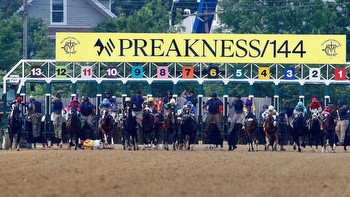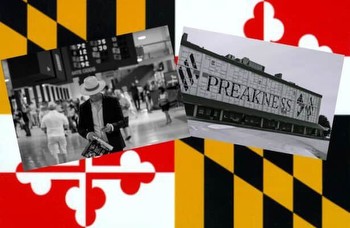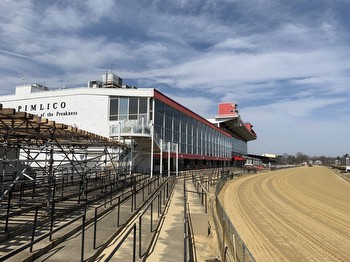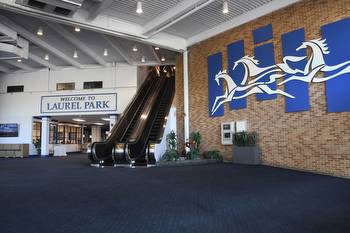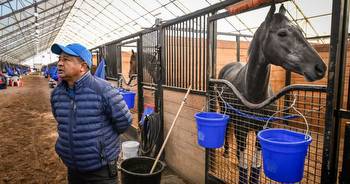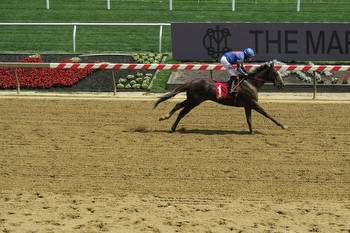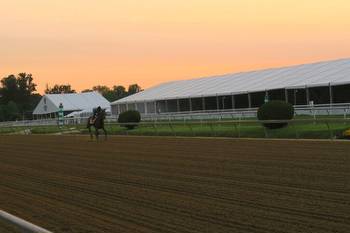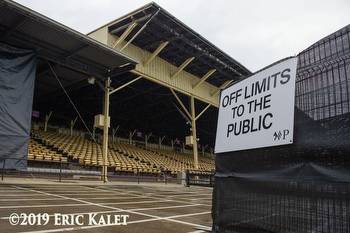The smart money is still on Pimlico

The cynical among us can be forgiven if they scoffed at the latest plan to revive Baltimore’s dilapidated Pimlico Race Course, home to the Preakness Stakes, the second leg of horse racing’s Triple Crown. But the new (or perhaps more accurately, revised) blueprint for the track may be the most sensible, most practical one yet. As detailed in a 16-page report from the Maryland Thoroughbred Racetrack Operating Authority, created last year by the General Assembly to recommend a path forward for Maryland racing, Pimlico would be closed shortly after the next running of the Preakness in four months to undergo a $400 million renovation and the big race diverted to Laurel Park for two years.
Most importantly under the “Pimlico Plus” plan, the track and day-to-day racing would be the responsibility of the state, with The Stronach Group retaining ownership of the Preakness but licensing it to a state-controlled nonprofit. Exactly how much the Canadian company stands to profit from this arrangement is not yet clear — and will surely deserve added scrutiny on par with the Baltimore Orioles and their extended lease at Camden Yards. But on the surface, the plan seems to provide a greater measure of protection to Maryland taxpayers, while retaining a high-profile, history-laden sporting event that is critical to the economics of the state’s horse industry and the well-being of the surrounding Park Heights community.
Let’s be clear on that latter point. As much attention is rightly given to Maryland’s thoroughbred industry and its $2 billion overall annual economic impact (of which racing is just a part), this opportunity to boost the economically depressed, predominantly Black neighborhood in Northwest Baltimore should loom large. That’s one reason why the anticipated investment not just in the track but also in an adjacent hotel and event space and adjacent potential development sites — all likely financed with private dollars — is especially welcome. The parallel with state investments in Oriole Park at Camden Yards and M&T Bank Stadium, home of the Ravens (and perhaps one day soon another Super Bowl trophy) is important. So is the anticipated state-supported redevelopment of Harborplace. Whatever vehicles can help pull Baltimore toward prosperity, whether by water taxi, light rail or horse, deserve to be pursued.
There should be no blank checks, of course. That’s why General Assembly approval of the plan, and the involvement of a nonprofit to be created by the Maryland Stadium Authority, remain critical. There is inevitable tension between the interests of the track’s private owners and the general public, which is among the reasons Pimlico’s revival has taken so long. Throw in COVID-19, rising costs (and interest rates) and design changes, and the delays don’t seem quite so unreasonable. Racing’s own controversies — including a shrinking fan base, the proliferation of other forms of sports gambling and concerns about animal cruelty in the wake of thoroughbred deaths — haven’t helped either. But even tarnished, the Woodlawn Vase and 150 years of tradition at the Baltimore track are far too valuable to abandon without a fight.
Nor is this structure a Hail Mary, exactly (if mixing sports metaphors can be forgiven). The Authority noted similar public-private nonprofit arrangements at New York’s Belmont and California’s Del Mar, where the state owns the facilities but the operations are handled by a nonprofit. One of the differences here is that Pimlico is not a year-round gaming facility, or “racino,” where slot machines and other forms of gambling allow private operators to turn a profit year-round. Moving the Preakness 28 miles south to Laurel, including for its historic 150th running next year, is not ideal, of course. And deciding where to eventually locate the state’s training facility (after Laurel is closed) remains an open question. But, on balance, lawmakers have before them a reasonable approach to maintaining Pimlico, consolidating the state’s racing assets and saving thousands of jobs while, we hope, providing a good “giddy-up” to the quality of life in Park Heights.
Hit all of those marks, and Pimlico Plus would be a quadruple crown victory.
Baltimore Sun editorial writers offer opinions and analysis on news and issues relevant to readers. They operate separately from the newsroom.


